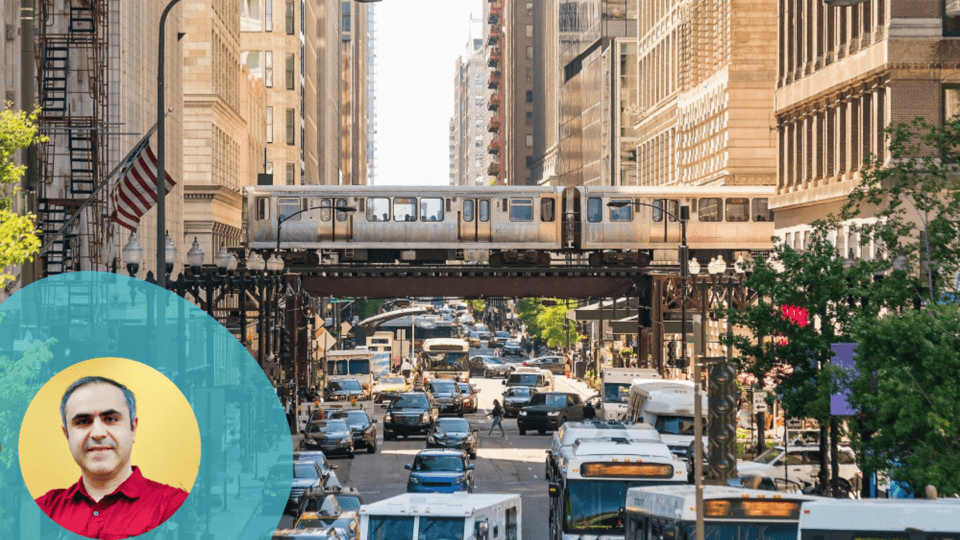Recent reports show that traffic delays cost U.S. drivers an average of 51 hours of lost time in 2022, and that number is on the rise — in 2021, the average was 36 hours. For the typical commuter, those lost hours can be frustrating. They extend the workday and increase fuel expenses. In fact, some studies have even found that traffic takes a toll on drivers’ health by increasing stress levels.
For last mile logistics companies, the impact of growing congestion is a problem that must be addressed. Growing traffic congestion — especially in urban areas — threatens to make it impossible for delivery companies to achieve the efficiency necessary to stay profitable.
To overcome the challenges that congestion presents, last mile logistics companies are exploring a variety of operational innovations, many of which involve leveraging the latest advances in technology.
The Challenges of Urban Congestion
Managing last mile logistics in urban landscapes presents several significant challenges for delivery companies. Delays caused by congestion are at the top of the list: that 51-hour average of time lost to traffic in 2022 increases to 117 hours in New York, 134 hours in Boston and 155 hours in Chicago.
Advertisement
For last mile logistics, traffic delays translate to increased fuel needs. They also have the potential to negatively impact driver retention, as driver fatigue and frustration lead to turnover. Both of these factors add to last mile operating costs.
Additionally, the lengthy delays that are a regular part of urban traffic can be extended by any number of unpredictable occurrences, including collisions and road repairs. These factors further extend delays, often causing drivers to miss delivery windows. The likelihood of delays also makes it challenging for last mile logistics companies to accurately predict delivery times, reducing their ability to meet consumers’ expectations when tracking deliveries.
The urban landscape also can make it more challenging to access delivery locations. Delivery routes become more complex as drivers are forced to navigate through narrow streets, pedestrian zones and high-density areas. Lack of convenient parking is another challenge regularly encountered by delivery vehicles in urban areas.
Streamlining with AI-Powered Optimizations
Route optimization is one of the key tools last mile logistics companies use to mitigate the impact of urban congestion. By analyzing various data sources, including traffic and weather data, route optimization tools can determine the most efficient and reliable routes for delivery vehicles. Leading platforms also provide dynamic optimization, which updates routes as data changes and automatically provides drivers with new instructions.
Optimizing routes becomes especially challenging as the number of deliveries each vehicle must make increases. Many companies turn to AI for assistance with multi-stop optimization, leveraging the technology’s data analytics capabilities to identify the most efficient delivery sequences and routes and even determine the optimal strategies for loading vehicles.
AI platforms also can be used to determine windows for delivery times. They can set times based on traffic data as well as the availability of customers. If delivery vehicles fall behind schedule, the platforms can update delivery windows and automatically notify customers.
Using AI for predictive analytics, last mile logistics companies can optimize fleet planning. Predictive analytics can suggest when companies should expect busy travel days, times and routes based on past data and emerging trends. This allows them to scale delivery personnel appropriately.
Avoiding Congestion with Smaller Vehicles
Using more agile vehicles is another tactic that helps delivery companies enhance the efficiency of urban deliveries. By using vehicles like light vans or cargo bikes, delivery companies can maneuver around high-traffic areas and have easier access to parking. Temporary storage lockers allow delivery companies to provide a handoff point between larger vehicles carrying more packages and the more agile vehicles that will cover the last mile.
Smaller delivery vehicles also help to reduce the amount of traffic in urban areas. A recent study suggests that the increasing demand for urban deliveries will result in a 36% increase in delivery vehicles in the world’s top cities by 2030. This is expected to increase road delays for the average commuter by 11 minutes per day.
Autonomous delivery vehicles also promise to help delivery companies avoid urban congestion. Because they are smaller than traditional delivery vehicles, autonomous vehicles can often use bike lanes or sidewalks to gain access to delivery locations. In many cases, these vehicles can deliver packages directly to the recipient’s door, eliminating the need for parking altogether.
Both traffic congestion and delivery demands are on the rise in urban locations, which means last mile logistics firms should expect their challenges to increase. To meet increasing demands, delivery companies must continue to lean into the latest technology innovations, leveraging AI to improve efficiency and open new avenues for streamlined delivery.
Anar Mammadov is the CEO of Senpex Technology. He is a software development professional with more than 18 years of experience in enterprise solutions and mobile app development. He applied his practical and results-oriented approach to business to create Senpex Technology, a personalized logistics and delivery service that utilizes groundbreaking artificial intelligence to optimize routes and provide the fastest, most efficient last mile delivery resource for businesses. Senpex can be utilized 24/7 with no interruptions to delivery needs.




